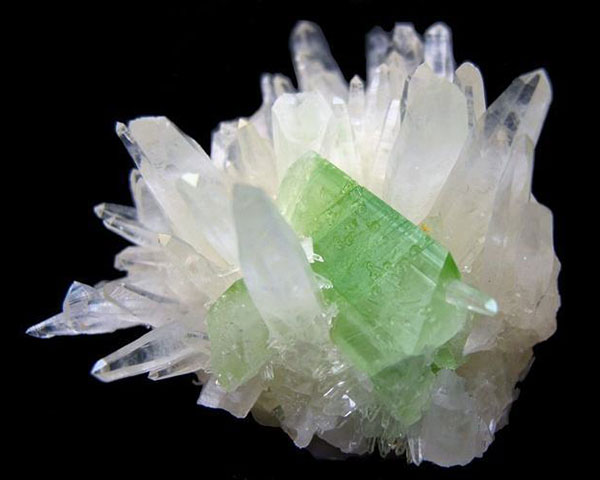Augelite stone is a kind of aluminum phosphate mineral, which is named after its surface and cleavage surface have silk luster. Augelite is produced in andalusite and sillimanite mines, often symbiotic with Variscite and lazulite.
It belongs to the Monocline system; the crystal is columnar, tabular or acicular. The main colors are colorless, white, light yellow, light red and light blue.
The main producing areas of Augelite stones are Bolivia, Sweden and Uganda. High-quality gem-grade crystals are mainly from the sillimanite mining area in Mono County, California, USA.
Basic Property of Augelite
- Chemical composition: Al2PO4 (OH) 3 includes Fe2+, Fe+, Ti and other mixtures.
- Crystal system and crystallization habit: monoclinic system, orthorhombic columnar type, crystals are columnar, plate-shaped and needle-shaped, and aggregates are massive form.
- Gloss: glass luster, silk luster on cleavage surface;
- Transparency:Transparent – Translucent
- Optical property: biaxial crystal, positive optical property, 2V=50 ° 49′.
- Refractive index and birefringence: Ng=1.588, Nm=1.576, Np=1.574; Birefringence is 0.014
- Cleavage and fracture: two groups of complete cleavage; one is good cylindrical cleavage, the other is axial cleavage; Staggered fracture, brittle in nature
- Mohs hardness: 5~5.5
- Density: 2.70g/cm3

Similar Augelite gemstones and differences:
It can be distinguished from turquoise according to cleavage and optical properties; and determined from labradorite according to birefringence.
Basic properties of Augelite
Physical characteristics of Augelite
Augelite is colorless, white, light blue, light yellow or light red, which is as bright as glass. It is colorless under transmitted light, and has glass luster. The cleavage surface is silky luster, transparent to translucent.
Positive optical property of biaxial crystal, refractive index Ng=1.588, Nm=1.576, N=1.574, Birefringence ratio of 0.014, 2V=50 ° 49 ‘, weak or no pleochroism, inertia under ultraviolet fluorescence, complete cleavage {110}, medium cleavage {201}, uneven fracture, Mohs hardness of 4.5~5.5, density of 2.074g/cm, brittle.
Occurrence and origin
Augelite occurs in andalusite mines and is symbiotic with massive Variscite and lazulite. High-quality transparent crystals are produced in California, USA. Augelite from Bolivia and other places is produced in tin ore in the form of angular crystals and crystal families.
In addition, Uganda, Sweden and other places also produce Augelite.
Conclusion:
Aurelite occurs in andalusite mines, and is often associated with massive Variscite, Attakolite and lazulite. High-quality polychrome crystals are produced in the “champion” sillimanite mine in Mono County, California, United States, and other producing areas, including Bolivia.
